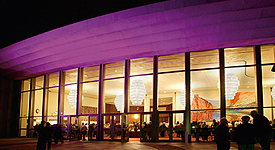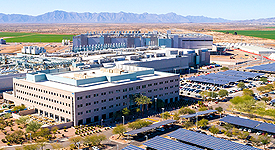July is Smart Irrigation Awareness Month and we would like to help you water smarter.
Install a Smart Irrigation Controller
Watering schedules should match the season and plant type. To make this easier, there are now Smart Irrigation Controllers that take into account this information and automatically make scheduling adjustments based on plant type, soil type and weather conditions. Newer controllers can even send watering and leak notices to your phone. These controllers can save up to 20% on outdoor water use.
- WaterSense-approved devices are eligible for a rebate of up to $250.
- Smart water controllers may help reduce annual outdoor water use by 30%.
Install Rain Sensors with Automatic Shut Off
Whether you have a smart or standard controller, installing a rain sensor/shut-off will allow your system to be automatically turned off in the event of rainfall.
Install Smart Water Applicators
- High Efficient spray nozzles for grass save 20%-30% on sprinkler water use
- Install pressure-compensating drip emitters instead of sprays and micro-sprays for all trees, shrubs and potted plants
High-efficiency nozzles and emitters apply larger water droplets more slowly reducing evaporation and runoff allowing water to reach the ideal root-depth of the plant.
These eight items are the most common, easy to fix issues with your irrigation system to help you save water and save on your water bill.
- Missing sprinkler and drip heads
- Sprinkler heads that don’t pop up
- Tilted or misaligned sprinklers – Ensure water only sprays on grass
- Sprinkler shooting water
- Sprinkler gurgling water from the base
- Underground leaks
- Leaking valves
- Over-watering
Finding, fixing and repairing: Efficient irrigation takes routine maintenance.
Turn on watering system and walk through each zone
Check:
- Plumbing and valve boxes for signs of drips, puddling or excess moisture which indicate leaking equipment:
- For wet spots, puddled or bubbling water and signs of water damage (could indicate an underground leak)
- For misting sprinklers or overspray (may indicate too much pressure. Misting creates smaller water droplets increasing the amount of evaporation. Contact an irrigation professional to discuss pressure regulation options)
- For clogged, misaligned, tilted or broken sprinklers (prevent water from getting where it is needed, can cause runoff, and damage to hard surfaces)
- For clogged, misaligned or missing drip emitters (prevent water from getting where it is needed, can cause runoff, and damage to hard surfaces)
- Valves
- Wiring (look for signs of corrosion that could prevent proper operation)
- Solenoid (look for signs of swelling, cracks or corrosion)
- Controller
- Battery (back-up batteries should be replaced annually)
- Schedules – make sure there are no unintentional programs or start times programmed
- Wiring (look for signs of corrosion that could prevent proper operation)
- Plumbing and valve boxes for signs of drips, puddling or excess moisture which indicate leaking equipment:
Fix broken parts
- Repair damaged lines and leaking connections
- Fix or replace broken or clogged sprinklers
- Fix or replace broken or missing drip emitters (plug if the plant has died)
Align Sprinklers and drip
- Adjust sprinklers to avoid watering pavement and to ensure water reaches dry areas
- Replace incorrect or mismatched sprinkler nozzles (Application rates and patterns can be different for various manufacturers causing uneven watering)
- Fix sprinklers spaced too far apart or too close
Adjust the Watering Schedule if needed
Repeat
- At least annually (Spring), but quarterly would be best to ensure an efficient system.
Another way to save money irrigating plants in your yard is rainwater harvesting.







